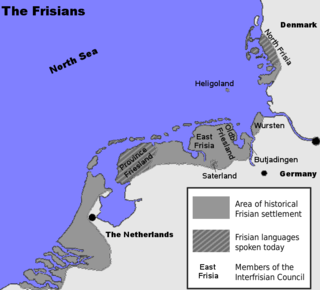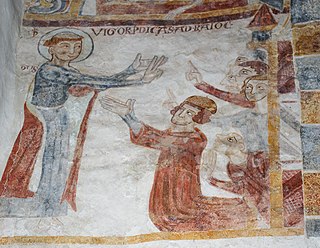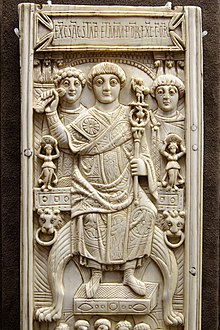1000 (M) was a leap year starting on Monday of the Julian calendar, the 1000th year of the Common Era (CE) and Anno Domini (AD) designations, the 1000th and last year of the 1st millennium, the 100th and last year of the 10th century, and the 1st year of the 1000s decade. As of the start of 1000, the Gregorian calendar was 5 days ahead of the Julian calendar, which was the dominant calendar of the time.
The 470s decade ran from January 1, 470, to December 31, 479.
The 500s decade ran from January 1, 500, to December 31, 509.
The 510s decade ran from January 1, 510, to December 31, 519.
The 540s decade ran from January 1, 540, to December 31, 549.
The 570s decade ran from January 1, 570, to December 31, 579.
The 490s decade ran from January 1, 490, to December 31, 499.
Year 431 (CDXXXI) was a common year starting on Thursday of the Julian calendar. At the time, it was known as the Year of the Consulship of Bassus and Antiochus. The denomination 431 for this year has been used since the early medieval period, when the Anno Domini calendar era became the prevalent method in Europe for naming years.

Year 810 (DCCCX) was a common year starting on Tuesday of the Julian calendar.

Year 602 (DCII) was a common year starting on Monday of the Julian calendar. The denomination 602 for this year has been used since the early medieval period, when the Anno Domini calendar era became the prevalent method in Europe for naming years.

Year 399 (CCCXCIX) was a common year starting on Saturday of the Julian calendar. At the time, it was known in Rome as the Year of the Consulship of Eutropius and Theodorus. The denomination 399 for this year has been used since the early medieval period, when the Anno Domini calendar era became the prevalent method in Europe for naming years.

Year 552 (DLII) was a leap year starting on Monday of the Julian calendar. The denomination 552 for this year has been used since the early medieval period, when the Anno Domini calendar era became the prevalent method in Europe for naming years.

Year 491 (CDXCI) was a common year starting on Tuesday of the Julian calendar. At the time, it was known as the Year of the Consulship of Olybrius without colleague. The denomination 491 for this year has been used since the early medieval period, when the Anno Domini calendar era became the prevalent method in Europe for naming years.
Year 505 (DV) was a common year starting on Saturday of the Julian calendar. At the time, it was known as the Year of the Consulship of Theodorus and Sabinianus. The denomination 505 for this year has been used since the early medieval period, when the Anno Domini calendar era became the prevalent method in Europe for naming years.

Year 513 (DXIII) was a common year starting on Tuesday of the Julian calendar. At the time, it was known as the Year of the Consulship of Probus and Clementinus. The denomination 513 for this year has been used since the early medieval period, when the Anno Domini calendar era became the prevalent method in Europe for naming years.

Year 515 (DXV) was a common year starting on Thursday of the Julian calendar. At the time, it was known as the Year of the Consulship of Florentius and Anthemius. The denomination 515 for this year has been used since the early medieval period, when the Anno Domini calendar era became the prevalent method in Europe for naming years.

Year 518 (DXVIII) was a common year starting on Monday of the Julian calendar. At the time, it was known as the Year of the Consulship of Paulus without colleague. The denomination 518 for this year has been used since the early medieval period, when the Anno Domini calendar era became the prevalent method in Europe for naming years.

Year 565 (DLXV) was a common year starting on Thursday of the Julian calendar. The denomination 565 for this year has been used since the early medieval period, when the Anno Domini calendar era became the prevalent method in Europe for naming years.

Year 668 (DCLXVIII) was a leap year starting on Saturday of the Julian calendar. The denomination 668 for this year has been used since the early medieval period, when the Anno Domini calendar era became the prevalent method in Europe for naming years.

Anicia Juliana was a Late Antique Roman imperial princess, wife of the magister militum of the eastern Roman empire, Areobindus Dagalaiphus Areobindus, patron of the great Church of St Polyeuctus in Constantinople, and owner of the Vienna Dioscurides. She was the daughter of the Roman emperor Olybrius and his wife Placidia, herself the daughter of the emperor Valentinian III and Licinia Eudoxia, through whom Anicia Juliana was also great-granddaughter of the emperor Theodosius II and the empress Aelia Eudocia. During the rule of the Leonid dynasty and the rise of the later Justinian dynasty, Anicia Juliana was thus the most prominent member of both the preceding imperial dynasties, the Valentinianic dynasty established by Valentinian the Great and the related Theodosian dynasty established by Theodosius the Great.











